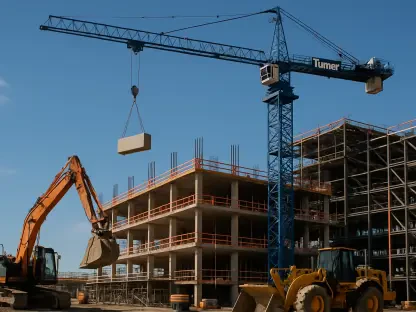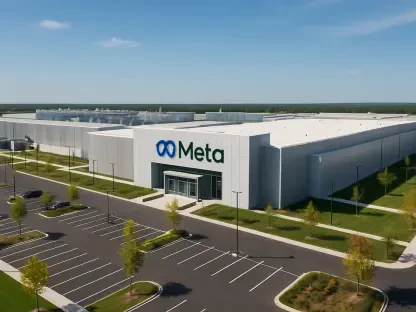Sunbelt build-to-rent has shifted from a niche experiment to a scaled housing engine as design rigor and institutional capital converge to meet strained affordability and flexible living preferences. Across Texas and Arizona, the segment gained shape as freestanding homes and townhomes delivered single-family experiences without the down payment, while professional management and connected locations reduced friction that typically accompanies suburban life. What stood out was not only the volume, but also the intentionality: curated amenities, generous private outdoor space, and layouts that favored flow and light over square-foot inflation. That mix resonated with renters squeezed by ownership costs and with empty nesters who wanted simplicity without giving up a yard, proving that form and financing now move in step.
Design, Livability, And Place-Making
The strongest proof point lived at Veranda Dellbrook in Hockley, Texas, a 15-acre, 182-home enclave inside the Dellrose master-planned community that treated rental as a lifestyle, not a fallback. Designed by KTGY with a modern farmhouse vocabulary, one- to four-bedroom homes between 634 and 1,434 square feet prioritized livability through efficient kitchens, sightlines to patios, and direct yard adjacency. Monthly rents started near $1,450 and rose past $2,149, reflecting the value of private space amid a clubhouse, resort-style pool and spa, fitness center, outdoor lounge, green belts, and dog amenities. Situated near U.S. 290 and the Grand Parkway, the community balanced serenity with regional access, luring both young couples and downsizers who might reject dense apartments but did not want the permanence of ownership.
Moreover, the product signaled a broader evolution in BTR design, where consistent themes—privacy, pet-friendliness, and resort-like commons—met careful site planning and traffic flow. Instead of cramming units to hit pro forma, the layout preserved breathing room, reinforced by green space and an amenity spine that anchored social activity without sacrificing quiet. KTGY’s emphasis on light, proportional rooms, and front-porch moments built a sense of place that narrowed the experiential gap between renting and owning. That mattered in a market where renters by choice sought flexibility, while households priced out of mortgages demanded value beyond a low monthly number. The resulting hybrid blurred lines: single-family comfort, apartment convenience, and master-planned services stitched into one renter-first neighborhood.
Capital, Scale, And The Next Phase
Design only carried weight because capital showed up with a long view, and recent moves suggested a maturing operating model. Taylor Morrison’s Yardly brand expanded as Christopher Todd Capital acquired the 193-home Yardly Paradisi in Surprise, Arizona for $55.2 million, while a $3 billion land and construction facility backed by Kennedy Lewis financed broader rollout. Approximately 40 Yardly communities across Texas, Arizona, Florida, and North Carolina pointed to repeatable prototypes, centralized management, and pipeline visibility. At the same time, RSK Real Estate Partners announced a “5/5/5” plan targeting 5,000 units in five years across growth metros such as Houston, Dallas, San Antonio, Raleigh, Orlando, and Jacksonville, and moved quickly by purchasing 9.4 acres near Katy, Texas for a 156-duplex project that blended attainability with scale economies.
Diversification extended beyond cottage formats. Wan Bridge readied West End Estates in New Braunfels for early 2026 with 1,200–1,800-square-foot townhomes, community recreation, and direct connectivity to I-35, showing that BTR could adapt to varied parcels and submarket needs without diluting the yard-and-privacy proposition. As investment broadened, so did discipline: proximity to highways and master-planned infrastructure reduced lease-up risk, and brand-standard amenities accelerated operations. Taken together, these moves indicated that Sunbelt BTR no longer relied on opportunistic single deals, but on an institutional cadence that supported consistent absorption and stabilized yields. Given that demand resilience held among both renters by necessity and by choice, stakeholders were positioned to refine underwriting to reflect lower turnover and premium pricing attached to pet-friendly yards and community programming.
In practical terms, the path forward favored builders and sponsors who treated design DNA as an operating system, not a veneer, and paired it with capital structures flexible enough to navigate entitlement cycles and construction volatility. Communities that embedded mobility access, programmed open space, and pet-centric features into site plans tended to win on renewals and referral traffic, compressing marketing costs while sustaining rent growth. Meanwhile, standardized unit types across metros offered procurement leverage, and integrated property tech supported maintenance response times that matched resident expectations. Success increasingly depended on marrying those efficiencies with micro-market sensitivity, adjusting mix among cottages, duplexes, and townhomes to match household formation patterns and school district pull.
The segment’s trajectory also suggested immediate steps: align pipeline phasing with delivery windows for nearby master-planned amenities, secure land positions near regional connectors before competition bid up residuals, and pilot design tweaks that boost livability without adding costly square footage. Licensing proven plans, dedicating fenced yards across most homes, and reserving green corridors for dog runs and passive recreation had proved accretive to both brand and NOI. As Sunbelt BTR consolidated into a distinct asset class backed by institutional players, the strategic edge rested on designing for dignity and efficiency while funding at scale, and this moment had set the baseline for an era in which renting single-family homes felt less like a compromise and more like a deliberate, well-supported choice.









